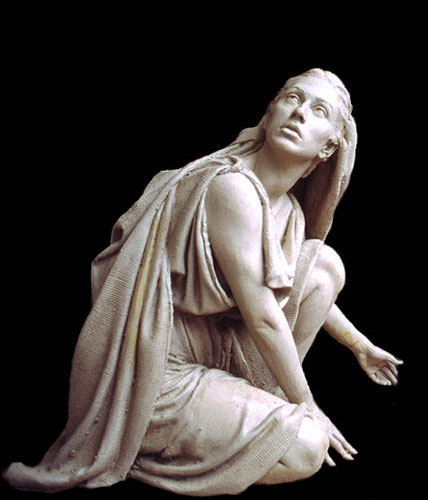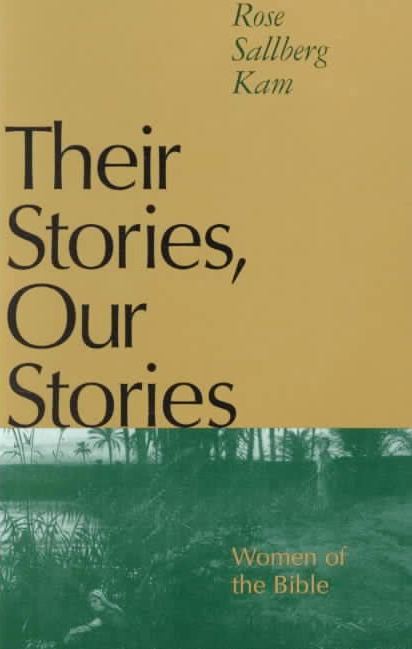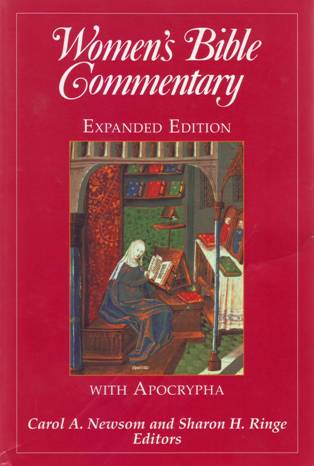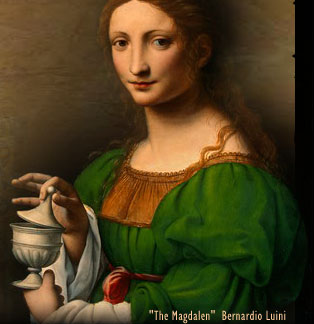What’s on this page?
New ideas about Mary Magdalene in the gospels.
Who was she, and why is she so important?
Was Jesus harsh to Mary, or was there a hidden message in his words?
Magdalene first encounters Jesus, so it appears, when she is seriously ill. Luke introduces her as among the women who receive treatment (therapeuo) from him for a severe physical or mental disorder. Some plausibly surmise that she is the unnamed woman who had the continual flow of blood.
She is among those loyal women who remain with Jesus at the Crucifixion. Whereas his uncomprehending male disciples desert him during the last hours before his execution, Magdalene stays with him until his agony is ended.
 Fearful for their own lives, those other disciples do not stay in Jerusalem, even to arrange for his burial. Magdalene sees where his body is buried and returns to that place after the sabbath is over to anoint the corpse with funeral perfumes.
Fearful for their own lives, those other disciples do not stay in Jerusalem, even to arrange for his burial. Magdalene sees where his body is buried and returns to that place after the sabbath is over to anoint the corpse with funeral perfumes.
The attitude of Magdalene and her women companions has been eulogized by Irishman Eaton Barrett: ‘Not she with trait’rous kiss her Saviour stung. Not she denied him with unholy tongue. She, while apostles shrank, could danger brave, last at his cross, and earliest at his grave.’
Magdalene’s notable place among Jesus’ female followers is not limited to his public ministry. She is most remembered for her Easter testimony, because she is the only woman present in the resurrection stories of all the Gospels.
What is the nature of her experience? Numbed by grief, she comes to the tomb where the body of Jesus has been hastily buried without the customary ointments and spices. While in the graveyard, she exclaims, “I have seen the Lord!”
Magdalene’s visionary experience is similar to that of the apostle Paul. He asks rhetorically: “Have I not seen Jesus Christ our Lord?”
Assertive Biblical Women, William E Phipps,Greenwood Press, Westport Connecticut, p.115-116.
… the image of Mary Magdalene as a penitent but flamboyant sinner caught the imagination of Western Christians, and it is in that role that Western artists have immortalized her. She is often shown clinging in excessive emotion to the feet of the risen Jesus, or flying to report the resurrection, a tangle of bright red hair floating behind her.
 The Gospels themselves paint a different portrait—that of an articulate, generous woman of ability, courage, and faith.
The Gospels themselves paint a different portrait—that of an articulate, generous woman of ability, courage, and faith.
The earliest Gospel, Mark’s, makes her steadfast devotion during the passion, death, and resurrection of Jesus especially clear. It is she alone, no male disciple, who provides the principle of continuity:
- she witnesses the crucifixion (15:40),
- she witnesses the burial (15:47), and
- she is commissioned to report the resurrection, first by an angel and then by Jesus himself (16:7, 9).
Thus she pre-eminently fulfills the criteria that Luke and Paul, between them, set for apostleship:
- recognition of Jesus as Messiah,
- belief in him,
- and having served as eye witness to his life, death, and resurrection.
‘Their Stories, Our Stories, Rose Sallberg Kam, New York, Continuum Publishing Co., p.234
When Mary listens to the voice of the risen Jesus, her perspective on the events in the garden changes. She no longer understands the empty tomb as a manifestation of death, but as testimony to the power and possibilities of life.
In the parable of the shepherd in John 10, Jesus said, ”[The shepherd] calls his own sheep by name and leads them out. . . . The sheep follow him because they know his voice” (10:3—4). Jesus called Lazarus by name to summon him from the tomb (11:43), and now his voice summons Mary to new life.
 Mary may have attempted to embrace Jesus after she recognized him, because he says to her, “Do not hold on to me, because I have not yet ascended to the Father” (20:17).
Mary may have attempted to embrace Jesus after she recognized him, because he says to her, “Do not hold on to me, because I have not yet ascended to the Father” (20:17).
Jesus’ words may strike some readers as unnecessarily harsh, as a cruel rebuke to Mary’s expression of joyous recognition. To read these words as cold and harsh is to misread them, however, and to overlook their import.
Jesus’ command, “Do not hold on to me, ” is the first post-resurrection teaching. When he speaks these words, Jesus teaches Mary that he cannot and will not be held and controlled.
One cannot hold Jesus to preconceived standards and expectations of who he should be, because to do so is to interfere with Jesus’ work and thereby limit what Jesus has to offer.
If Mary had stopped Jesus from ascending to God, holding him with her in the garden, the Easter story would be incomplete.
Jesus’ prohibition to Mary thus actually contains the good news of Easter: Do not hold on to me, but let me be free so that I can give you the fullness of what I have to offer.
Women’s Bible Commentary, Carol A. Newsom and Sharon H. Ringe, Editors, Westminster John Knox Press, Louisville, 1992.





